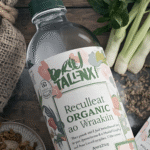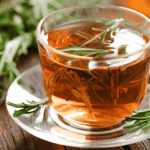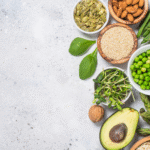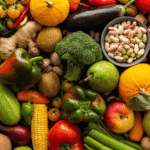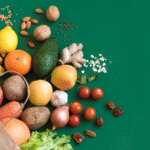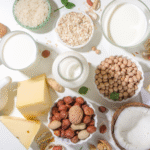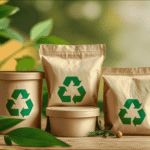Every year, shoppers face the same dilemma: Should I buy organic or save money on conventional produce?
The truth is, not all fruits and vegetables carry the same risk of pesticide residues. That’s where the Dirty Dozen & Clean Fifteen framework, popularized by the Environmental Working Group (EWG), comes in. It’s a practical tool that helps families make smarter choices about when to spend extra for organic and when it’s safe to stick with conventional.
In this guide, we’ll break down what the Dirty Dozen and Clean Fifteen lists are, why they matter, and how to use them to shop smarter.
What is the Dirty Dozen?
The Dirty Dozen is an annual list of 12 fruits and vegetables that are found to have the highest levels of pesticide residues when grown using conventional farming methods. The list is published by the Environmental Working Group (EWG), a nonprofit organization that analyzes data from the USDA (U.S. Department of Agriculture) and FDA (Food and Drug Administration).
Each year, thousands of produce samples are tested for pesticide contamination, and the results are ranked to determine which crops consistently carry the greatest chemical load.
Why These Crops Rank High
The fruits and vegetables on the Dirty Dozen list often share certain characteristics that make them more vulnerable to pesticides:
- Delicate Skins or Thin Peels: Crops like strawberries, spinach, and apples don’t have thick outer skins to protect them, so pesticides are easily absorbed.
- High Pest Pressure: Leafy greens and grapes are especially prone to insects and fungal diseases, leading farmers to rely on more frequent chemical applications.
- Popular Crops: Because these foods are widely consumed, they are heavily produced and often grown in intensive farming systems that depend on pesticides.
The Dirty Dozen (Latest EWG Data)
- Strawberries 🍓 — Frequently at the top of the list; nearly all samples test positive for multiple pesticide residues.
- Spinach 🥬 — Often contains residues of permethrin, a pesticide linked to neurological effects.
- Kale, Collard, and Mustard Greens — Can carry more than 20 different pesticides in testing.
- Grapes 🍇 — Thin skin makes them highly susceptible to contamination.
- Peaches 🍑 — Soft skin absorbs pesticide sprays easily.
- Pears 🍐 — Show residues from fungicides and insecticides used to protect the fruit.
- Nectarines — Similar to peaches, often test positive for multiple chemicals.
- Apples 🍏 — Highly treated crop due to pests and fungal diseases.
- Bell & Hot Peppers 🌶️ — Can carry residues of insecticides and fungicides.
- Cherries 🍒 — Frequently test positive for pesticide residues, sometimes multiple per sample.
- Blueberries 🫐 — Newer to the list; rising pesticide contamination has been noted.
- Green Beans — Added recently because many samples tested positive for pesticides banned in some countries.
Health Concerns with the Dirty Dozen
- Cumulative Exposure: Many of these crops test positive for multiple pesticide residues, increasing the risk of combined effects over time.
- Vulnerable Groups: Children and pregnant women are especially at risk, as even small amounts of pesticide exposure can affect development.
- Specific Risks: Some of the pesticides found are linked to hormone disruption, reproductive issues, and in some cases, cancer.
Example: The pesticide permethrin, often found on spinach, has been associated with neurological effects in animal studies.
How to Shop Smarter
- Buy Organic: Whenever possible, choose organic versions of the Dirty Dozen to minimize exposure.
- Prioritize for Kids: If your family eats apples, berries, or spinach daily, going organic in these categories is especially impactful.
- Frozen Counts Too: Organic frozen strawberries, spinach, or blueberries can be more affordable while still offering the same pesticide reduction benefits.
- Wash Thoroughly: Washing and peeling can help reduce surface residues, but many pesticides are systemic (absorbed into the plant), so organic is the safest option.
Key takeaway: The Dirty Dozen list highlights which fruits and vegetables are worth buying organic to significantly reduce pesticide exposure. You don’t have to eat 100% organic to benefit — just focusing on these high-risk foods can make a measurable difference in your health.
What is the Clean Fifteen?
The Clean Fifteen is the counterpart to the Dirty Dozen list, published annually by the Environmental Working Group (EWG). It highlights 15 fruits and vegetables that consistently show the lowest pesticide residues in government testing, even when grown using conventional farming methods.
These crops typically need fewer pesticide applications because they are naturally more resistant to pests or diseases. Many also have thick skins or peels, which act as a natural barrier against chemical absorption.
The Clean Fifteen (Latest EWG Data)
- Avocados 🥑 — Nearly 98% of samples show no detectable pesticides; the thick peel provides excellent protection.
- Sweet Corn 🌽 — Minimal pesticide residues, though it’s worth checking for GMO labeling if non-organic.
- Pineapples 🍍 — Tough outer rind prevents most pesticide penetration.
- Onions 🧅 — Natural pest resistance means farmers rarely need to use heavy pesticide sprays.
- Papayas — Low residues, but note that some Hawaiian papayas may be genetically modified (look for organic or non-GMO if that’s a concern).
- Sweet Peas (Frozen) — Typically low in pesticide residues, with added protection from freezing and processing.
- Asparagus — Naturally pest-resistant, requiring very little pesticide treatment.
- Honeydew Melon — Thick rind limits exposure to residues.
- Kiwi 🥝 — Fuzzy skin provides a protective barrier.
- Cabbage — Minimal pesticide use due to natural resistance.
- Mushrooms 🍄 — Grown in controlled environments with little pesticide need.
- Mangoes 🥭 — Thick peel shields the fruit from most chemical absorption.
- Sweet Potatoes — Naturally hardy and resistant, with very low pesticide residues.
- Watermelon 🍉 — Thick rind prevents most pesticides from reaching the flesh.
- Carrots 🥕 — Root crop grown underground; testing shows consistently low residues.
Why These Crops Rank Low
- Protective Skins and Peels: Avocados, pineapples, melons, and mangoes have thick outer layers that are not typically eaten, limiting exposure to residues.
- Natural Resistance: Crops like onions, asparagus, and cabbage don’t attract pests as much, reducing the need for pesticide use.
- Controlled Growing Environments: Mushrooms, for example, are cultivated in carefully managed indoor conditions, minimizing pesticide exposure.
Health Implications
- These foods are considered low-risk in terms of pesticide exposure, making them safe to buy conventional if organic options aren’t available or affordable.
- For families on a budget, the Clean Fifteen offers a practical compromise: you can save money on these items and still reduce your overall chemical exposure by prioritizing organic for Dirty Dozen foods.
Shopping Tips
- Go Conventional Here: Don’t feel guilty buying non-organic avocados, pineapples, or onions — the pesticide risk is minimal.
- Be GMO-Aware: Sweet corn and papayas can be genetically modified in some regions. If GMOs are a concern, look for certified organic or Non-GMO Project Verified labels.
- Mix & Match: Combine Clean Fifteen with organic versions of Dirty Dozen items to create a balanced, budget-friendly shopping cart.
- Still Wash & Prep: Even though these foods are low-residue, washing and peeling helps remove dirt, bacteria, and any surface chemicals.
Key takeaway: The Clean Fifteen helps you make smarter, budget-conscious choices. These fruits and vegetables are safe to buy conventional, allowing you to focus your organic budget on high-risk Dirty Dozen produce.
Why This Framework Matters
- Budget-Friendly: Going fully organic can be expensive. This framework helps prioritize where organic matters most.
- Health Protection: Focuses on minimizing pesticide exposure, especially important for children and pregnant women.
- Sustainability: Supports informed consumer choices without overwhelming families who can’t afford 100% organic.
Practical Tips for Using the Lists
- Go Organic for the Dirty Dozen: Especially if you eat these raw (like apples, berries, or spinach).
- Mix & Match: Buy conventional versions of the Clean Fifteen to balance your budget.
- Wash & Peel: Always wash fruits and veggies, organic or not, to reduce surface pesticide residues.
- Shop Seasonal & Local: Local, in-season produce often has fewer pesticide applications compared to imported crops.
Frequently Asked Questions (FAQ)
1. Who creates the Dirty Dozen & Clean Fifteen lists?
The lists are compiled annually by the Environmental Working Group (EWG), based on USDA and FDA testing of pesticide residues.
2. Are Dirty Dozen foods unsafe to eat if not organic?
No. All foods sold in the U.S. must meet government safety standards. The Dirty Dozen simply highlights where pesticide residues are most concentrated.
3. Do washing and peeling remove pesticides?
Washing helps reduce residues, and peeling removes some, but many pesticides are absorbed into the crop itself — making organic a safer option for high-risk foods.
4. Should kids and pregnant women follow this framework strictly?
Yes. Since children and developing fetuses are more sensitive to pesticides, prioritizing organic for Dirty Dozen foods is especially beneficial.
Conclusion
The Dirty Dozen & Clean Fifteen framework is a practical, science-based tool that empowers you to make smarter food choices. By going organic where it matters most and saving money on low-risk produce, you can eat healthier, protect your family from unnecessary pesticide exposure, and stay within budget.
Remember: The goal isn’t perfection — it’s progress. Even small shifts toward buying organic when it counts can make a meaningful difference in your health.

